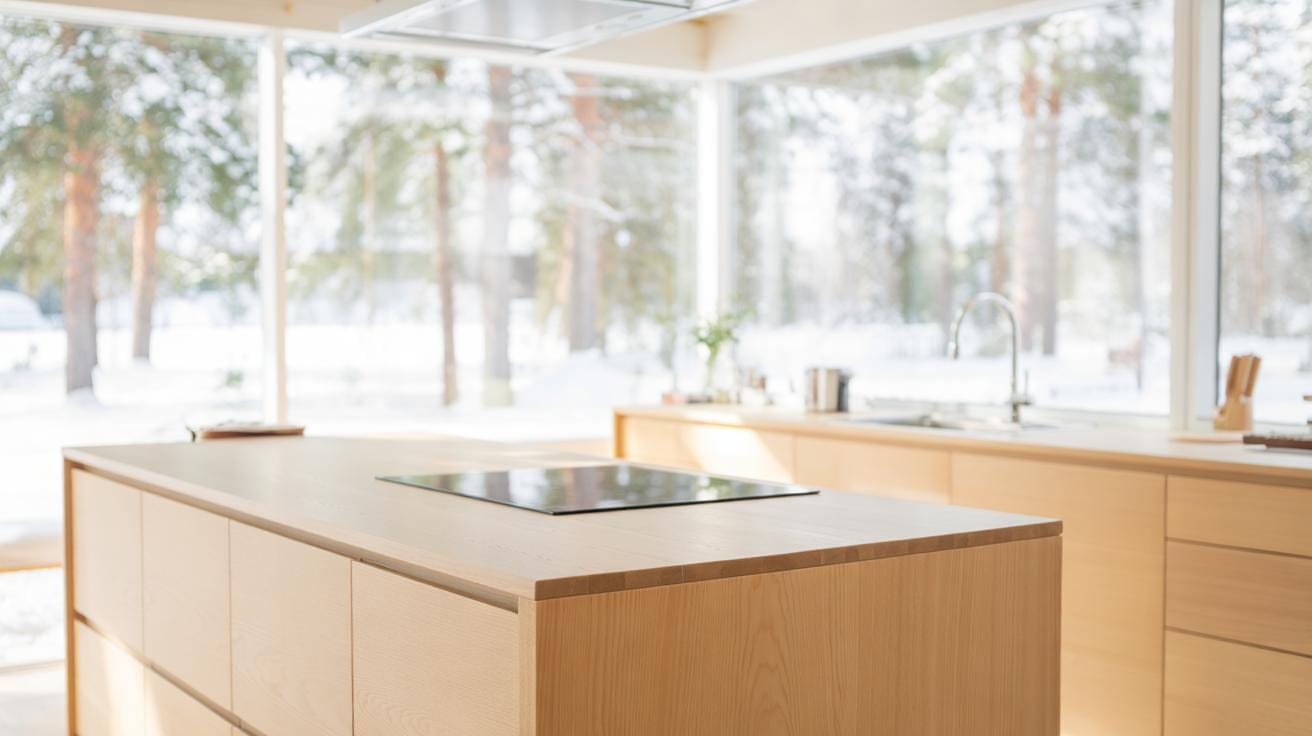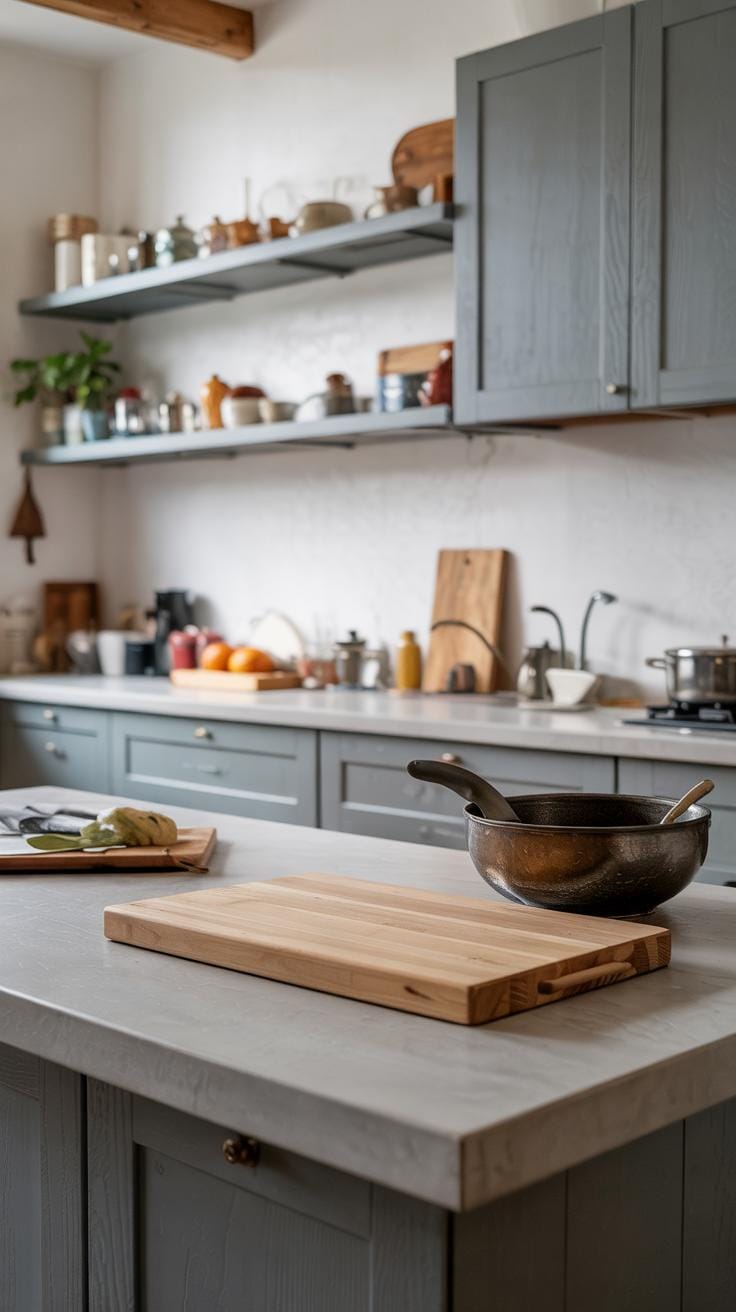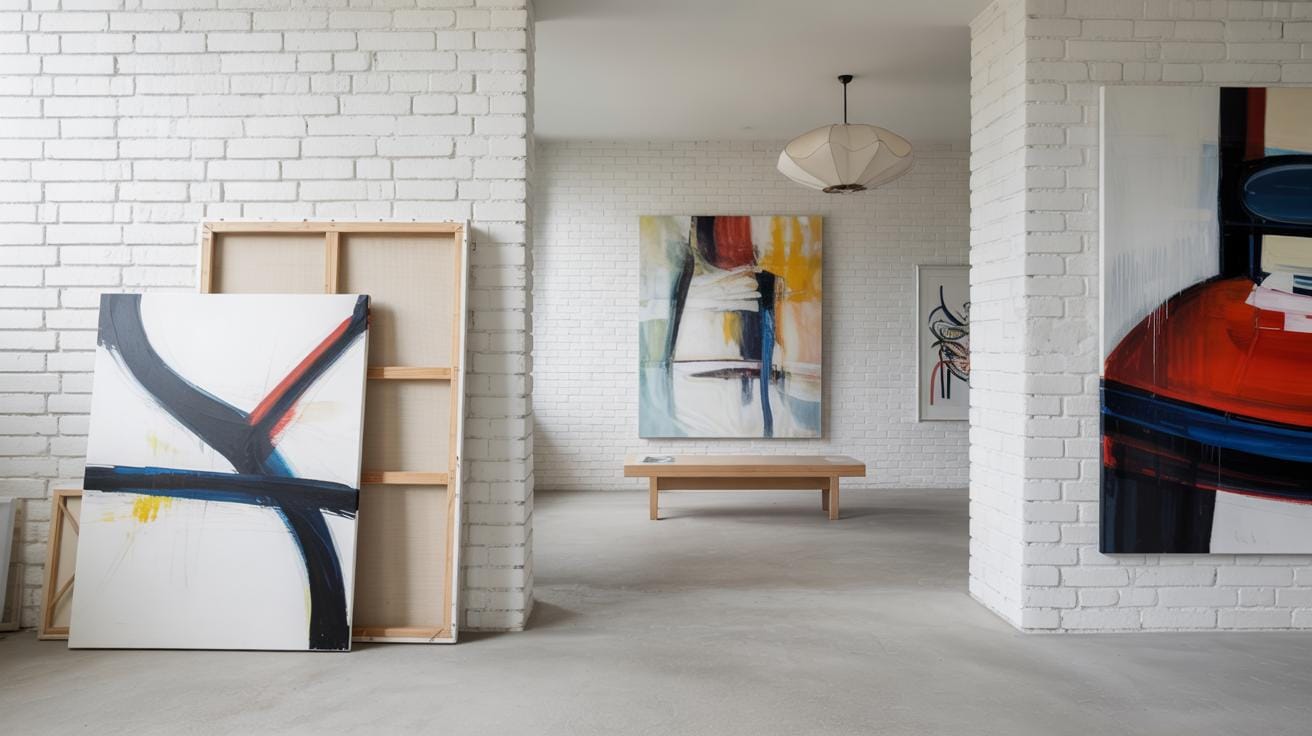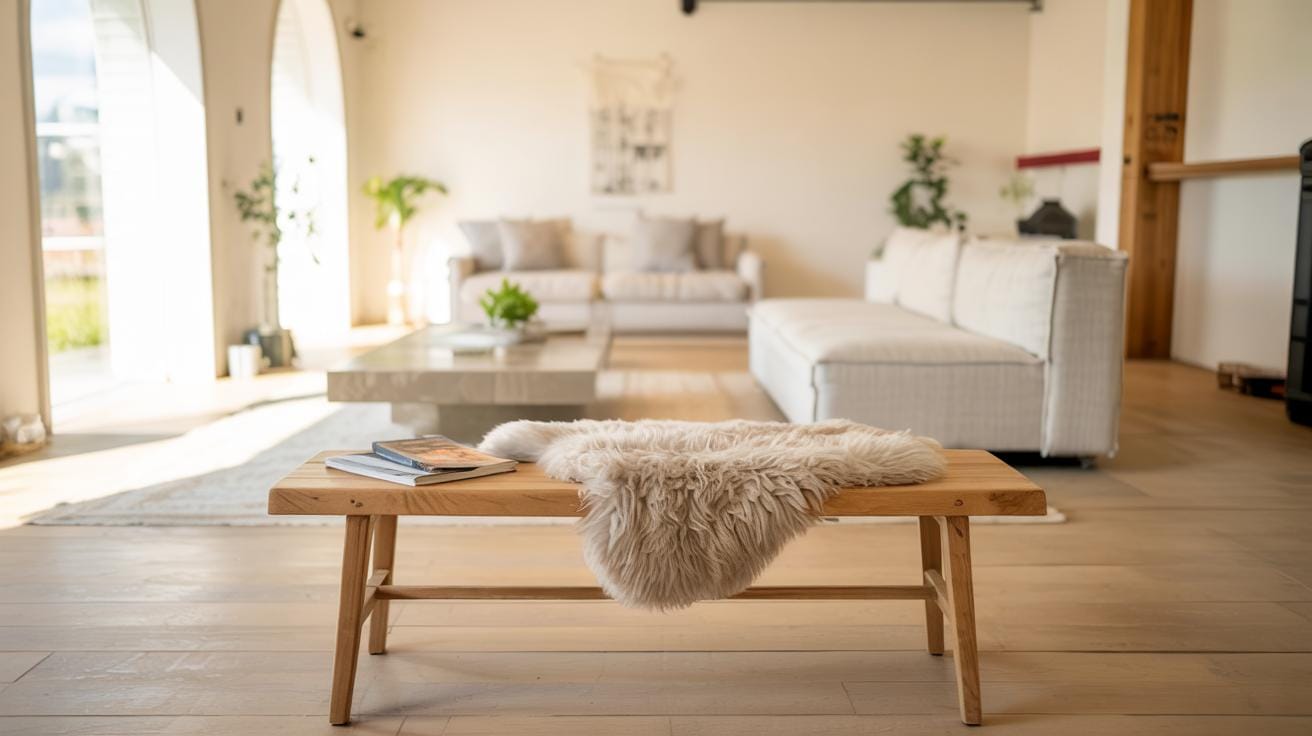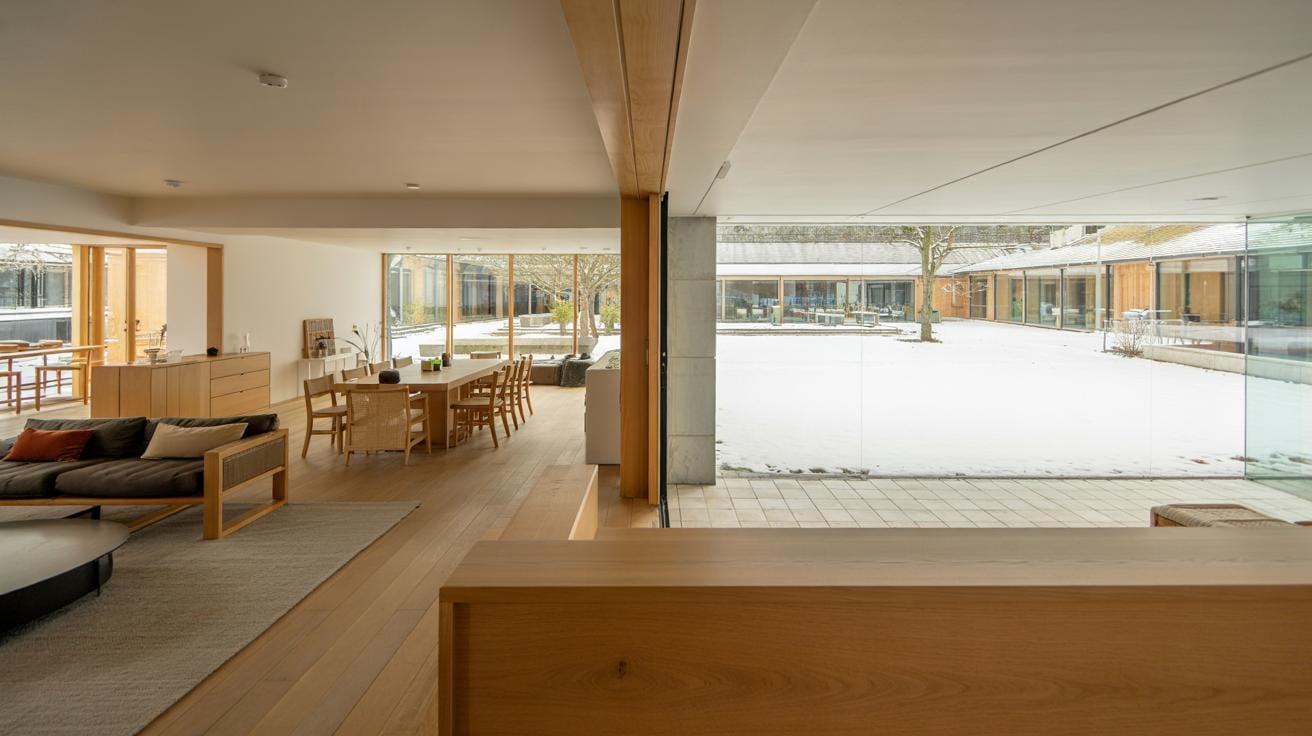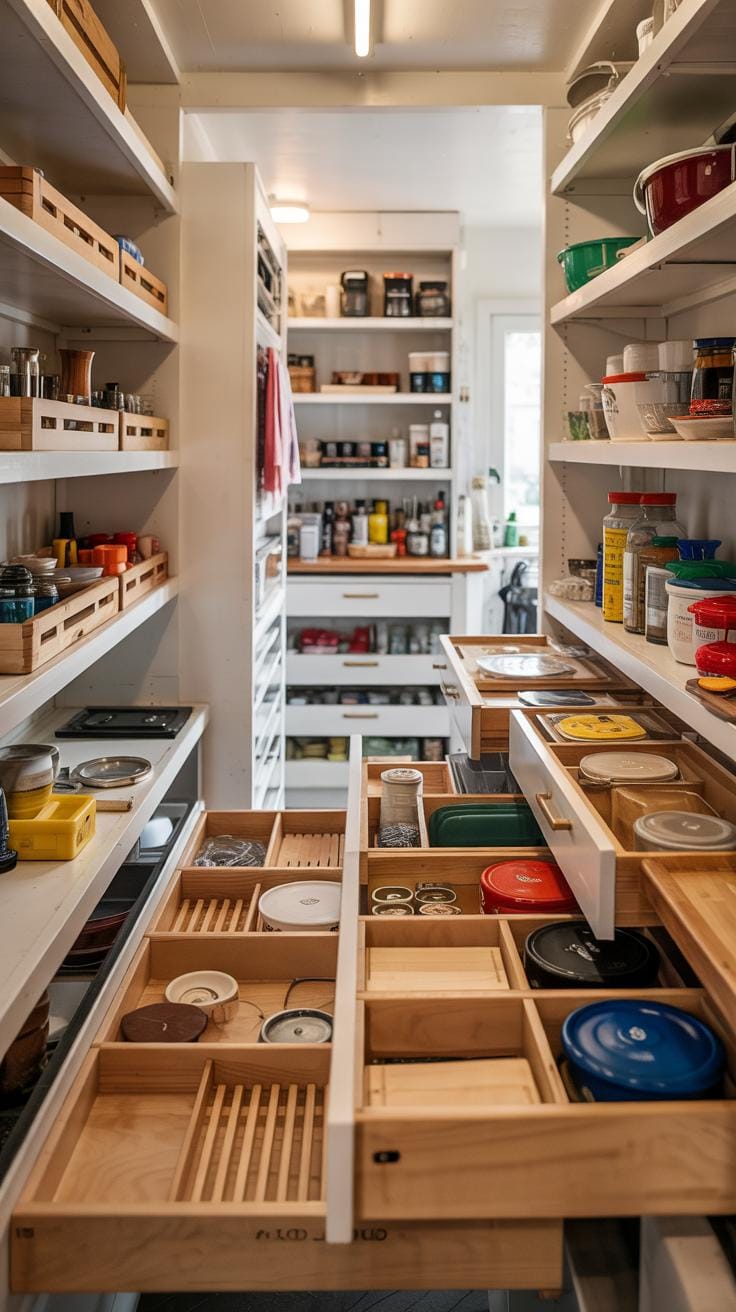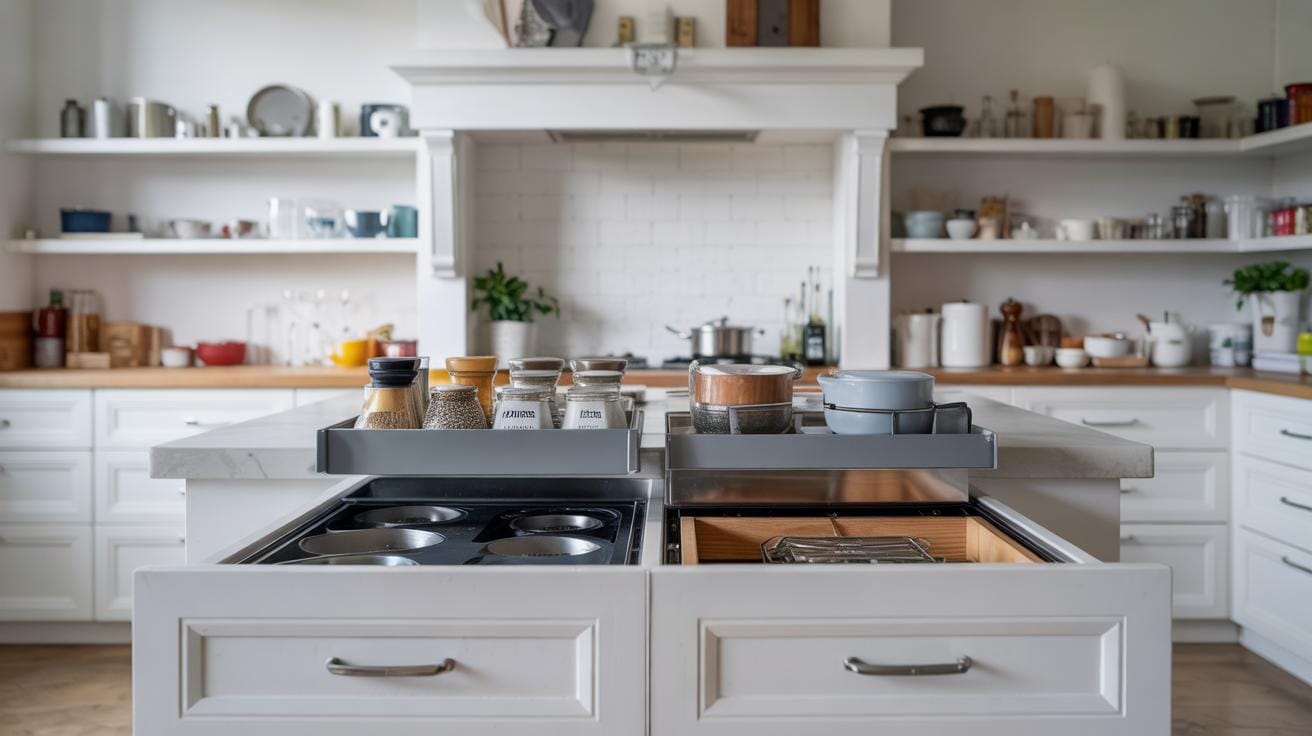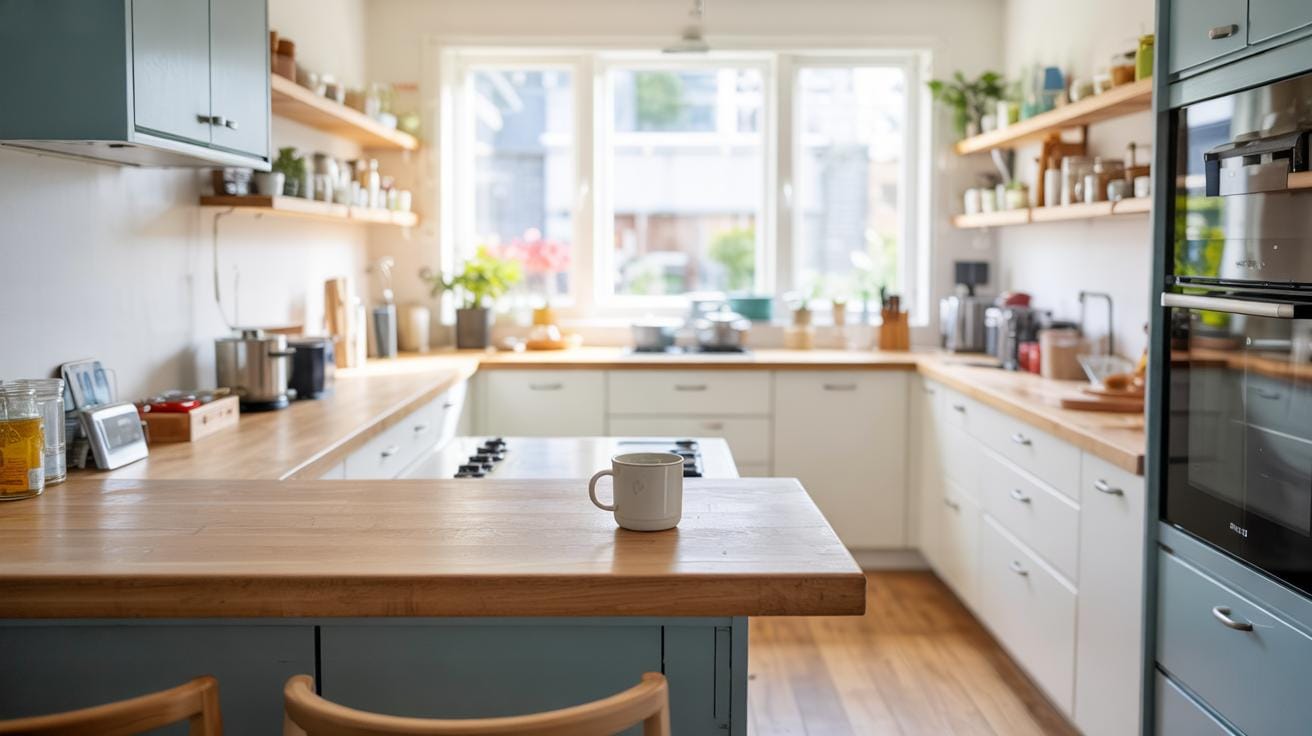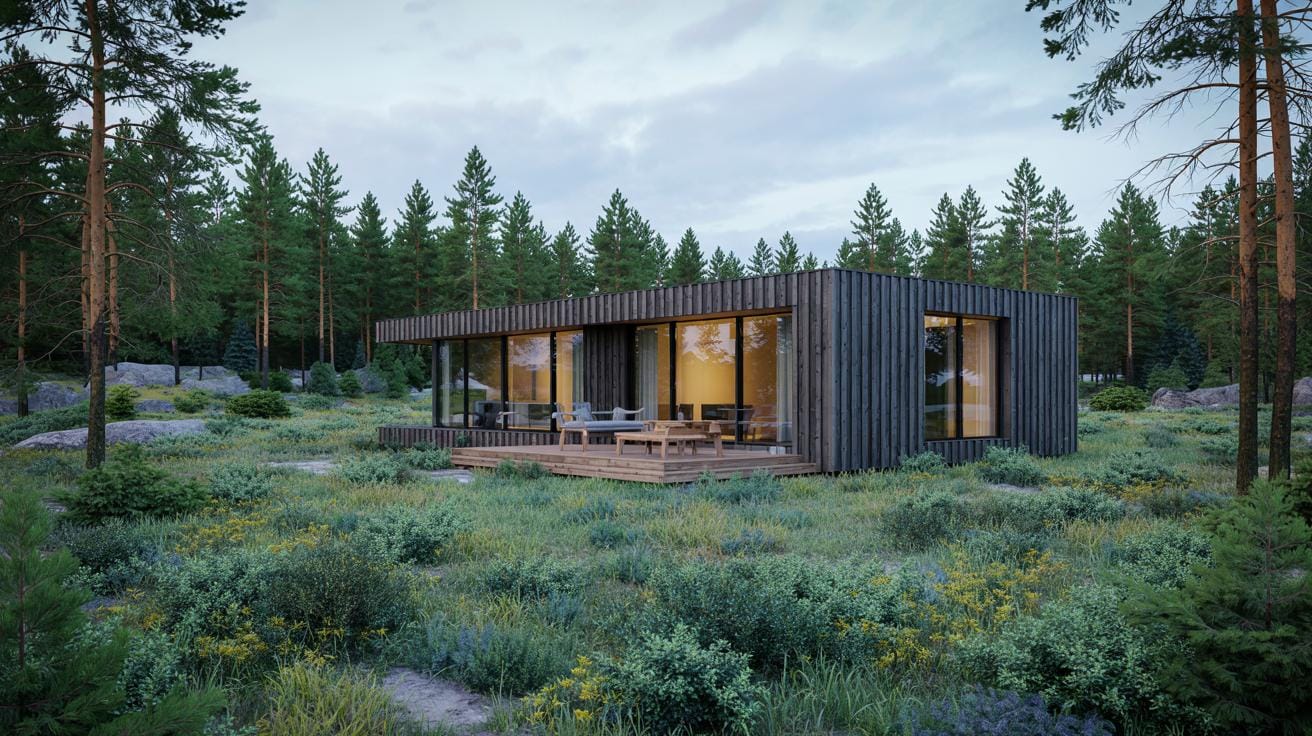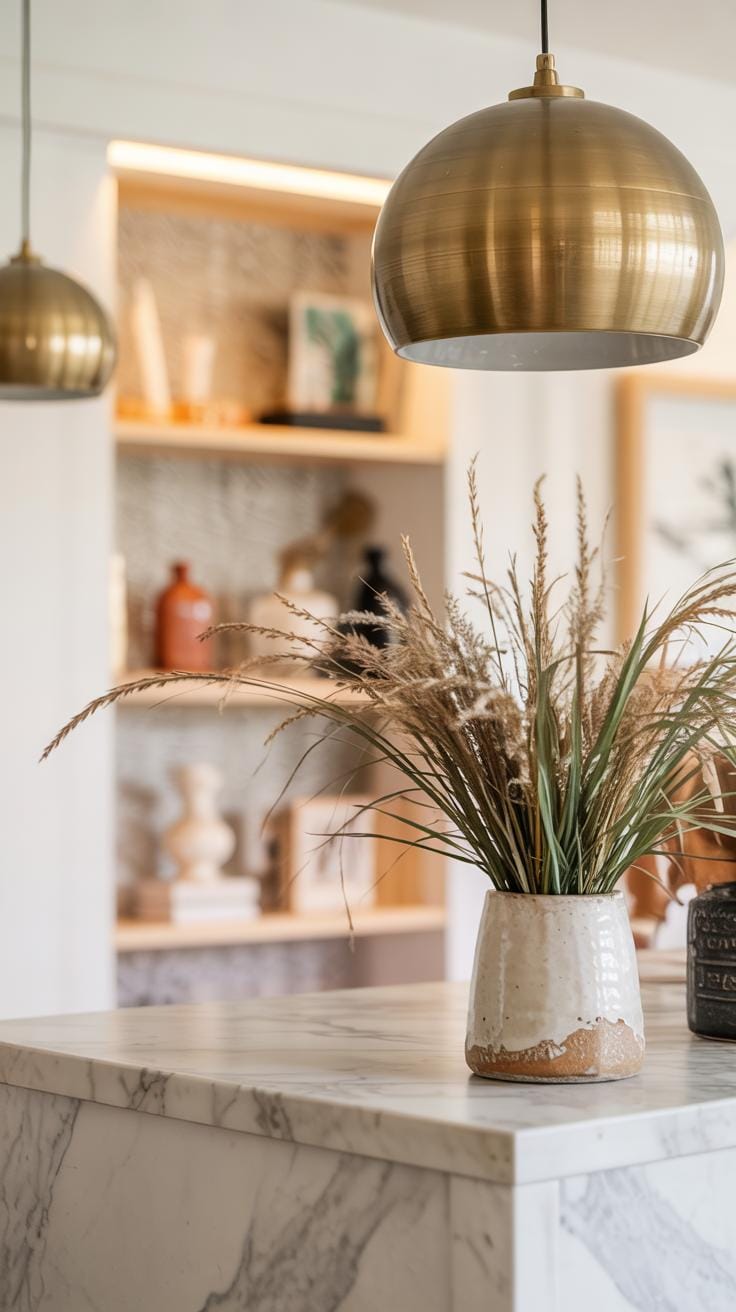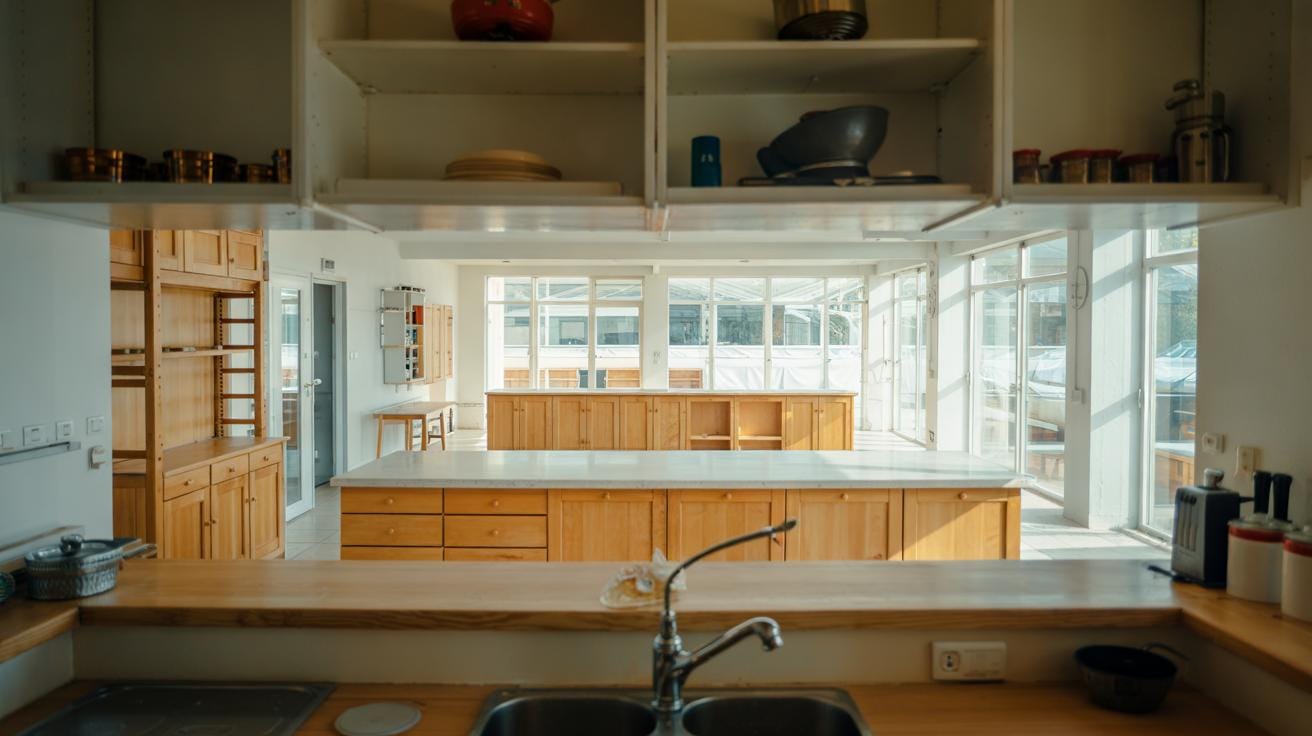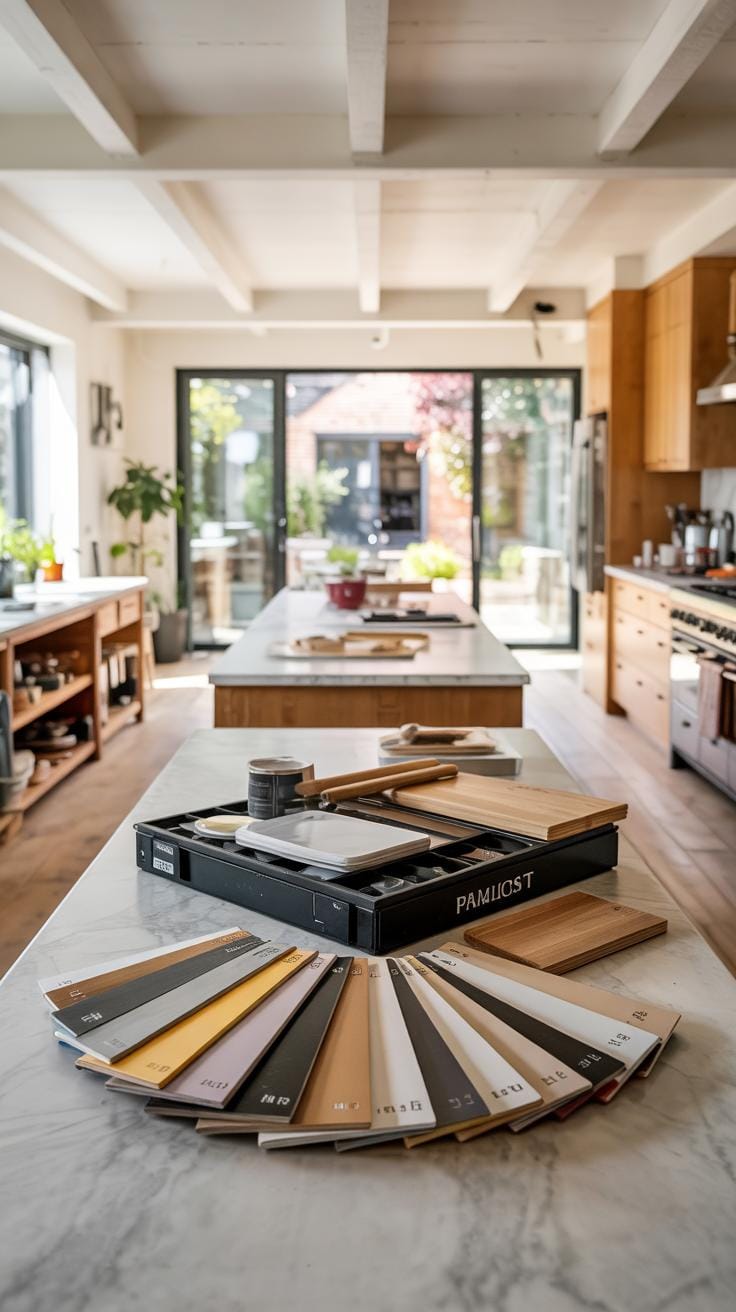Introduction
Scandinavian kitchen design focuses on simplicity, functionality, and natural elements. It has gained popularity worldwide for offering clean lines, minimal clutter, and a harmonious atmosphere. You will find a blend of style and practicality that works well in modern homes. This article explores what makes this design unique and what trends are emerging for 2025. By learning about these features, you can decide how to apply them to your kitchen space in a meaningful way.
The kitchen serves as the heart of the home where cooking meets living. Adopting Scandinavian design principles means you can create a space that supports your daily lifestyle efficiently. Key aspects include light colors, use of wood, and innovative storage solutions. This guide presents detailed insights on these elements plus top trends coming up in 2025. You will be able to plan or update your kitchen to meet both style and functional goals effectively.
Core Principles of Scandinavian Kitchen Design
The heart of Scandinavian kitchen design lies in simplicity, functionality, and the use of natural materials. You want your kitchen to feel easy to use and comfortable to spend time in. Designs avoid busy patterns or over-decoration, focusing instead on clear, purposeful layouts that support daily tasks. Every element has a reason, from storage that keeps counters clear to workflows that reduce effort.
Natural materials like wood and stone play a key role. They connect the space with the outdoors and add warmth. These materials age well and bring texture without overwhelming the senses. The overall effect aims for calm and balance, creating kitchens that invite you to cook, gather, and relax without distractions.
How do you make sure your kitchen serves both function and style? Scandinavian design shows that keeping things simple and rooted in nature builds spaces you want to use day after day.
Simplicity and Minimalism
Minimalism shapes every corner of a Scandinavian kitchen. You reduce clutter by fitting in smart storage solutions that hide most items when not in use. Smooth cabinet fronts with no extra hardware create clean lines, which help your mind rest and focus when working in the kitchen.
By removing unnecessary details, the space feels larger and more inviting. A minimalist layout keeps everything within easy reach, which speeds up meal prep and cleanup. You can find balance between beauty and practicality when your kitchen only holds what you truly need.
Have you thought about what could be removed from your kitchen to improve flow? Sometimes less is exactly what makes the space function better and look sharper.
Natural Materials and Light
Natural wood is central to Scandinavian kitchens, appearing in floors, worktops, and cabinetry. Light-colored woods like birch and pine bring a subtle warmth without darkening the room. These woods suit both modern and traditional kitchen styles, adapting well over time.
Neutral colors such as whites, soft grays, and creams complement the wood and amplify daylight. Generous use of natural light reduces the need for artificial lighting during the day, making the room brighter and saving energy.
Think about the windows in your kitchen: Can you maximize sunlight without losing privacy? Using translucent materials or sheer curtains helps you enjoy natural light while keeping the room cozy.
Color Palettes and Materials Shaping the Space
Neutral and Light Color Choices
The use of light and neutral colors directly affects how your kitchen feels. In Scandinavian kitchens, whites and soft grays dominate the space. These colors reflect natural light, making your kitchen appear larger and more open. When you choose pale shades for your walls, cabinets, or even backsplashes, you bring an airy quality to the room. How often have you noticed a small space feeling cramped simply because it uses dark tones? Light colors prevent this by creating a clean, calm environment that supports focus and ease during meal prep. You don’t need flashy colors to make a statement—subtle hues work well to balance practicality and style in everyday use.
Wood and Stone Elements
Wood and stone materials add a tactile and visual warmth to Scandinavian kitchens. Light woods such as pine, ash, or birch serve both functional and decorative roles. These woods resist wear and tear while maintaining a simple, natural look that fits the kitchen’s minimalist ethos. Stone surfaces—like soapstone or granite—offer durability for countertops where daily cooking happens. Their natural patterns give subtle uniqueness, avoiding uniformity without overwhelming the design. Consider how combining the smoothness of stone with the grain of wood creates texture diversity. Have you thought about mixing these materials in your kitchen to balance softness with strength? This approach enhances the space’s livability and connects it to nature.
Storage Solutions and Layout Efficiency
Scandinavian kitchens focus on keeping spaces simple and free from clutter. Smart cabinetry plays a key role in this. Cabinets with hidden compartments and pull-out shelves give you more room without crowding the kitchen. Built-in storage units create a seamless look, blending with the walls while keeping everything within reach.
Using space-saving designs like corner drawers or vertical pull-outs helps you store more in smaller areas. Have you tried adding tall cabinets that stretch to the ceiling? They take full advantage of vertical space and reduce the need for extra furniture.
When planning your kitchen, think about how you move and work within it. Efficient layouts reduce walking distance between key areas like the stove, sink, and refrigerator. Open-plan kitchens with islands are common in Scandinavian design. Islands offer extra counter space and storage, making cooking and socializing easier.
Does your kitchen layout encourage smooth flow? Arranging storage and work zones logically improves usability and saves time. By combining smart storage with clear layouts, you create a kitchen that feels open and organized without sacrificing function.
Smart Storage Designs
Hiding clutter is a priority in Scandinavian kitchens. Cabinets with push-to-open doors remove the need for handles, which keeps lines clean and surfaces smooth. Multi-purpose solutions like drawers with built-in racks or cutting boards offer more than just storage.
Open shelves look nice but can quickly get messy. Many prefer to keep items behind cabinet doors or inside drawers to maintain a tidy, minimalist look. Can you imagine your kitchen with everything out of sight but easy to access when cooking?
Pull-out pantry units, rotating shelves, and integrated trash bins maximize usable space. These features help you organize better and keep countertops free from everyday items. Your kitchen should feel calm and orderly, and smart storage helps you reach that goal.
Optimized Kitchen Layouts
Effective kitchen layouts make cooking faster and more enjoyable. The triangle layout remains popular, placing the stove, sink, and fridge close enough for easy movement. Many Scandinavian kitchens now also include islands or peninsulas, creating clear work zones and extra seating.
Open floor plans connect kitchens to dining and living areas, encouraging conversation while you prepare meals. This setup enhances natural light flow and produces a spacious feel. How does your kitchen shape influence family time or hosting friends?
Compact but well-planned layouts suit smaller homes. Pull-out counters or fold-down tables add work space when needed. Clear pathways and organized zones let you move without bumping into obstacles. Your kitchen’s design should help, not hinder, your daily routine.
Sustainability and EcoFriendly Choices Rising
Sustainability shapes many decisions in Scandinavian kitchen design for 2025. You will find that more kitchens use materials and appliances that reduce environmental impact. Designers focus on choices that lower waste and carbon footprints while maintaining style and function.
Consider how the materials around you influence your kitchen’s effect on the planet. Using eco-friendly items can create a space that respects nature and lasts longer. This approach lets you cut energy bills and supports a healthier environment.
Environmentally Responsible Materials
Wood remains a staple in Scandinavian kitchens, but now you find more renewable sources. Woods like bamboo and FSC-certified pine offer fast growing, sustainable options. Recycled elements, such as reclaimed wood or repurposed metals, also add character and reduce waste.
Choosing finishes without toxic chemicals improves air quality and safety. Water-based stains and natural oils replace harsh varnishes. These details matter if you care about your home and the environment.
Energy-Efficient Appliances
New appliances reduce both energy use and environmental harm. You can select dishwashers and refrigerators rated for low power consumption. Induction cooktops heat quickly and waste less energy than traditional models.
Look for Energy Star-certified devices or models with smart sensors that adjust based on use. How could choosing these appliances affect your monthly utility costs? Small changes lead to big results in lowering your kitchen’s overall footprint.
Technology Integration in Kitchen Design
Scandinavian kitchens in 2025 are blending simplicity with smart technology to make your daily cooking smoother and more efficient. Connected appliances like ovens, refrigerators, and dishwashers offer remote control through smartphone apps. This lets you start cooking or check your fridge contents even when you’re away. Imagine preheating your oven on your drive home or receiving alerts when your groceries run low. These intelligent tools cut down cooking time and help avoid waste.
Voice-controlled assistants are becoming common, letting you set timers, find recipes, or adjust appliance settings hands-free. This keeps your hands free and your kitchen workflow uninterrupted. How often do you wish for an extra pair of hands while cooking? These technologies answer that need without adding clutter.
Smart Appliances and Gadgets
Smart devices in Scandinavian kitchens take care of repetitive tasks so you can focus on creativity. For example, induction cooktops with built-in sensors adjust heat automatically, preventing overcooking or burning. Multi-functional coffee machines program your perfect brew with a tap on your phone. You can even find smart compost bins that remind you when to empty them, supporting your eco-friendly lifestyle.
These gadgets not only speed up meal prep but increase energy efficiency by using power only when necessary. Do you know which devices in your kitchen consume the most energy? Smart tech helps you monitor and manage usage for cost savings and environmental impact.
Automated Lighting and Controls
Lighting in Scandinavian kitchens now adapts to your schedule and mood. Automated systems learn your habits to adjust brightness and color temperature throughout the day. Cooler, brighter lights wake you up for morning tasks, while warmer, softer lighting sets a calm ambiance for evening meals. You can control this with voice commands or simple smartphone apps.
Motion sensors activate lights when you enter the kitchen and turn them off when you leave, saving energy without effort from you. Thoughtful lighting enhances your workspace, reducing eye strain and making cooking more enjoyable. Have you tried customizing your kitchen lighting to match different times or activities? Automated controls make this easy and practical.
Decor and Finishing Touches Defining Style
Scandinavian kitchen decor balances simplicity with warmth. Your choice of decorative items should keep the space clean but inviting.
Consider adding plants that suit low light, such as pothos or snake plants. They bring life and fresh air without overwhelming the minimalist look. Small potted herbs on the windowsill serve a practical and visual purpose.
Textiles remain a key element. Use light-colored linen towels or cloths to add texture without clutter. Soft rugs with subtle patterns can soften hard floors and add comfort where you stand often.
Wall art tends to be minimal. Think black and white prints or simple landscapes that reflect nature. Avoid overly busy or bold designs to maintain calmness.
Ask yourself, how can these small additions improve your kitchen’s atmosphere without disrupting its function?
Natural and Functional Accessories
Houseplants connect your kitchen to nature and keep the space feeling fresh. Use ceramic pots in neutral colors for a seamless look. Plants like herbs add a natural fragrance and are ready to pick for cooking.
Woven baskets appear throughout Scandinavian kitchens. Their practical use ranges from storing fruits to holding kitchen linens. They add organic texture and help maintain order.
Ceramic dishes, especially those handmade or with simple designs, serve dual roles. Display them on open shelves or use them daily. Their natural feel suits the overall aesthetic and enhances functionality.
What natural elements can you incorporate that also help keep your kitchen tidy and efficient?
Textiles and Surface Finishes
Linen towels and cloth napkins stand out for their softness and durability. They dry quickly and maintain a clean look over time. Choose whites, creams, or muted tones to blend smoothly with your cabinetry and counters.
Wooden cutting boards are not only practical but contribute warmth and detail to your kitchen surfaces. Opt for boards made of light woods like maple or birch to complement typical Scandinavian color palettes.
Matte and satin finishes on cabinets and countertops minimize glare and maintain a subtle, clean appearance. They resist smudges better than glossy options, keeping your kitchen looking neat during busy cooking sessions.
How can your choice of textiles and finishes improve comfort and ease without disrupting your kitchen’s neat lines?
Preparing Your Kitchen for 2025 Trends
You can start remodeling your kitchen by focusing on core Scandinavian principles—simplicity, functionality, and natural light. Assess your current layout to identify spaces where you can improve flow and storage. Think about how you use your kitchen daily. Is there enough counter space for meal prep? Could storage be more accessible? Set clear priorities that match your lifestyle.
Choose materials that last and feel natural, such as light wood or stone surfaces. Keep cabinet designs clean and handle-free for a sleek look. Consider matte finishes that reflect soft light, enhancing the room’s airy feel. Think about integrating hidden storage solutions like pull-out drawers and corner units to maximize efficiency.
Planning for Function and Style
Consider how much space you have and what matters most to you. Would you prefer open shelves for easy access or closed cabinets to reduce clutter? Define what practical means for your routine. For example, families may need durable surfaces and easy-clean taps. Minimalist design doesn’t mean sacrificing comfort. Choose statement pieces carefully, like a simple pendant light that adds style without overpowering the room.
Ask yourself which kitchen tasks take priority. Is it cooking, baking, or entertaining? Use these insights to position appliances and work areas logically. Balancing functionality with aesthetics will ensure your kitchen is both useful and inviting.
Incorporating Trends Gradually
Introduce new technologies like smart faucets or energy-efficient appliances in small steps that fit your current setup. You don’t have to redo everything at once. Start with an eco-friendly water filter or a low-wattage induction cooktop to reduce energy use. Let your existing design guide you. For example, add a sleek LED strip under cabinets without changing the overall style.
Mix sustainable materials carefully. Replace old countertops over time or swap out cabinet handles for recycled metal options. Question if each change improves your daily experience—does it save time, reduce waste, or enhance comfort? This approach keeps your kitchen up to date without overwhelming you or your budget.
Conclusions
Scandinavian kitchen design offers a clear path for creating organized and beautiful spaces. The emphasis on minimalism and natural materials delivers timeless appeal that fits various tastes. The upcoming trends for 2025 signal continued innovation with eco-friendly choices, smart technology, and enhanced usability. These factors will help you shape a kitchen that remains practical and stylish for years to come.
Implementing these concepts requires attention to detail and understanding your needs. Ask yourself what you want in your kitchen and which elements will serve those needs best. Consider light tones, natural wood, smart features, and efficient layouts. Combining these will achieve a balanced environment that supports everyday activities smoothly. This guide aims to equip you with the knowledge needed to transform your kitchen confidently.

